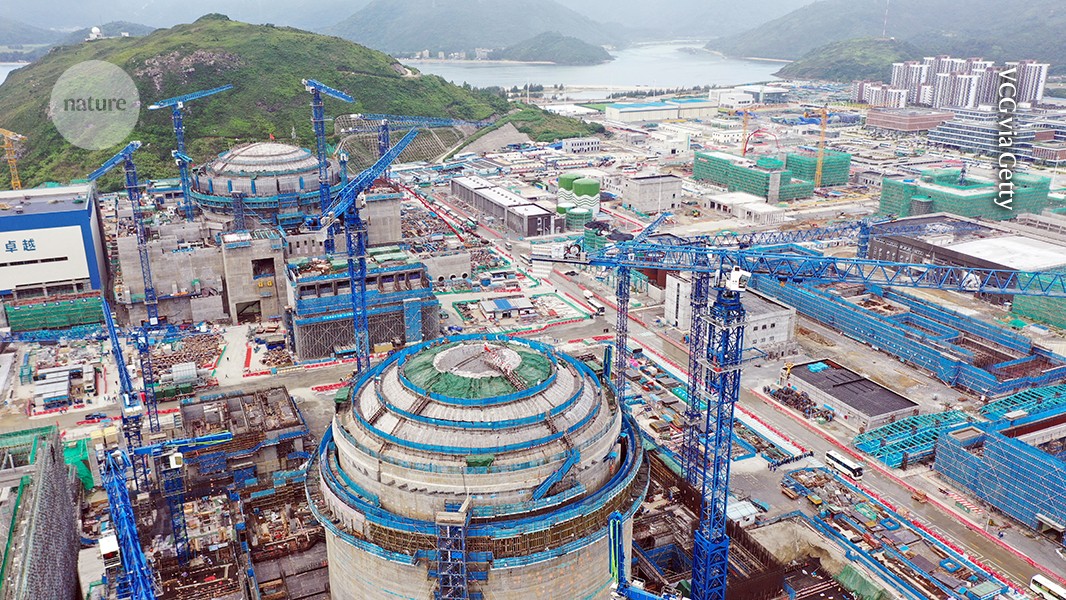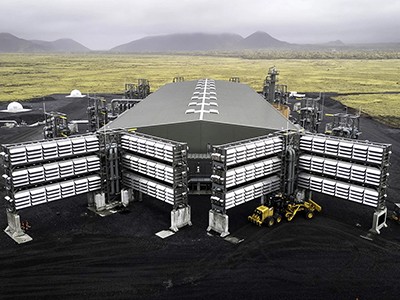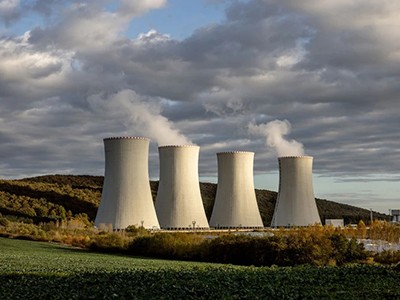Once again, the world is betting on nuclear power. The United States aims to quadruple its nuclear capacity by 2050, and more than 30 countries have pledged to triple global capacity by mid-century. China has more than 30 reactors under construction and in planning, and France has announced plans to build 14 reactors. Technology giants, including Amazon, Google and Microsoft, are also investing in nuclear to power their energy-hungry data centres and lower their carbon emissions.
A central challenge remains: can development be done at a manageable cost? Historically, the industry has faced a ‘cost escalation curse’1–4. Building more nuclear reactors has led to higher, not lower, costs per watt (see ‘Costly construction’), hampering their economic viability. By contrast, for solar and wind energy, mass production and steady technological improvements have driven costs down5,6.
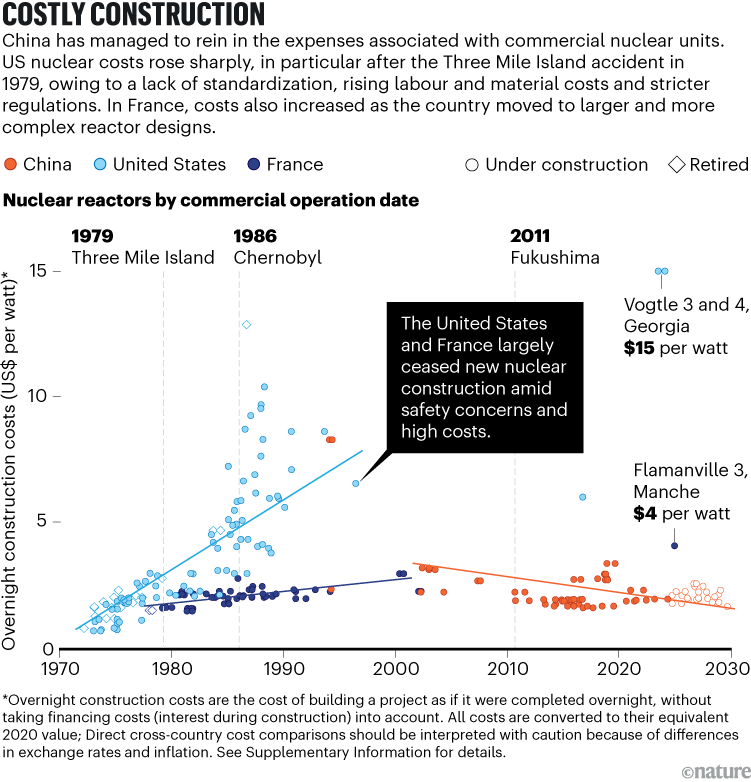
Source: Analysis by S. Liu et al.
The cost of building nuclear power plants can soar because of a lack of standardized designs, rising material and labour costs, evolving regulations and technical complexities7. But is this cost escalation inevitable? Here, we show that tailored regulations and policies can reverse the trend. Decades of nuclear-energy development in China demonstrate that construction costs can be brought down through a combination of stable regulations and efforts to strengthen domestic supply chains.
China’s success in curbing costs
Over the past two decades, China has been the main country to substantially and consistently expand its nuclear fleet, to 58 operating reactors in 2024. Since 2022, the government has been approving around ten new reactors each year, putting China on track to surpass the United States and become the world’s largest holder of nuclear power capacity by 2030. State-affiliated research centres have outlined a goal of quintupling China’s current nuclear capacity by 2050.
Six roadblocks to net zero — and how to get around them
We have compiled and analysed a data set on the construction costs of nuclear power plants in China, drawn from a wide range of publicly available sources (see Supplementary information for raw data and further analyses). We focus on the cost of construction, because operating and fuel costs are relatively low and have remained stable3,8.
Our findings are striking. Whereas construction costs increased substantially between the 1960s and 2000s, by around tenfold in the United States and by nearly twofold in France, they had halved in China by the early 2000s and have remained largely stable since.
Various strategies were used to keep technological costs down, such as building larger plants for scale efficiency and leveraging accumulated experience. But these alone fail to fully explain the cost-reduction trend observed in China. The country has also managed to contain costs through strategic development of domestic supply chains, stable regulatory frameworks, state-backed incentive policies and effective construction management.
The key driver of cost reduction has been China’s deliberate effort to build domestic capacity in civil nuclear power, which unfolded in three stages. From the 1990s to 2005, China imported foreign reactors to deploy immediately while gradually producing simple, conventional components domestically and using Chinese firms for civil engineering and construction to reduce costs. At the same time, it began researching and developing its own reactor design based on French technology.
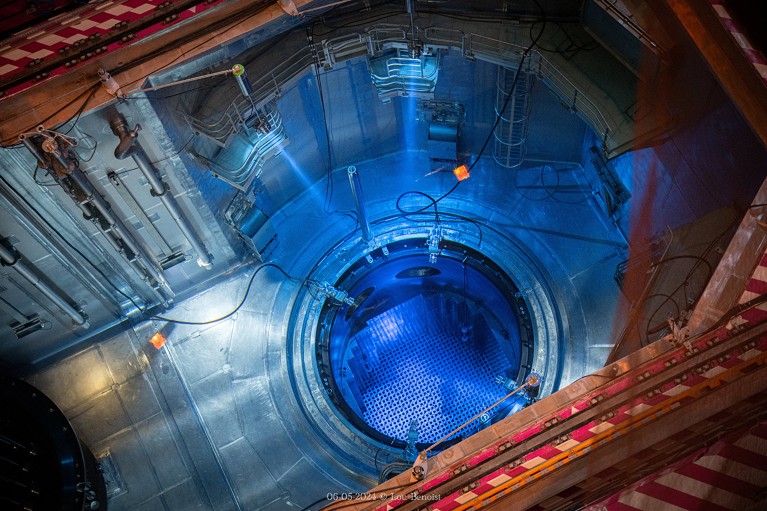
The nuclear vessel inside the Flamanville 3 reactor in northwestern France.Credit: Lou Benoist/AFP via Getty
Between 2005 and 2010, these efforts to localize production advanced to include more complex, safety-critical components, such as reactor cores. China ramped up capacity, building about 30 reactors using two domestically developed model types. After the Fukushima nuclear disaster in Japan in 2011, China accelerated the adoption of advanced safety features by collaborating with partners from the United States and France, while developing its own advanced reactor models.
Substituting expensive imports with domestically produced components substantially reduces cost. Some Chinese-made nuclear components, such as tubes, ring cranes and charging pumps, cost half as much as their imported equivalents. However, for countries that import their nuclear technologies, domestic supply-chain building must be strategic. For example, South Korea adopted a similar approach to China, which led to cost reductions4,9. By contrast, around the 1980s, France deviated from the tried-and-tested US reactor design in favour of a national version, which hindered standardization and caused construction costs to soar3.
Will AI’s huge energy demands spur a nuclear renaissance?
China’s regulatory structure and policy environment also play an important part. A consistent, state-backed industrial policy has provided stable electricity tariffs and low-interest financing for state-owned nuclear power companies (see go.nature.com/3uhsdfd). Its centralized nuclear governance structure helps to ensure regulatory stability and coordinates reactor standardization across the country.


